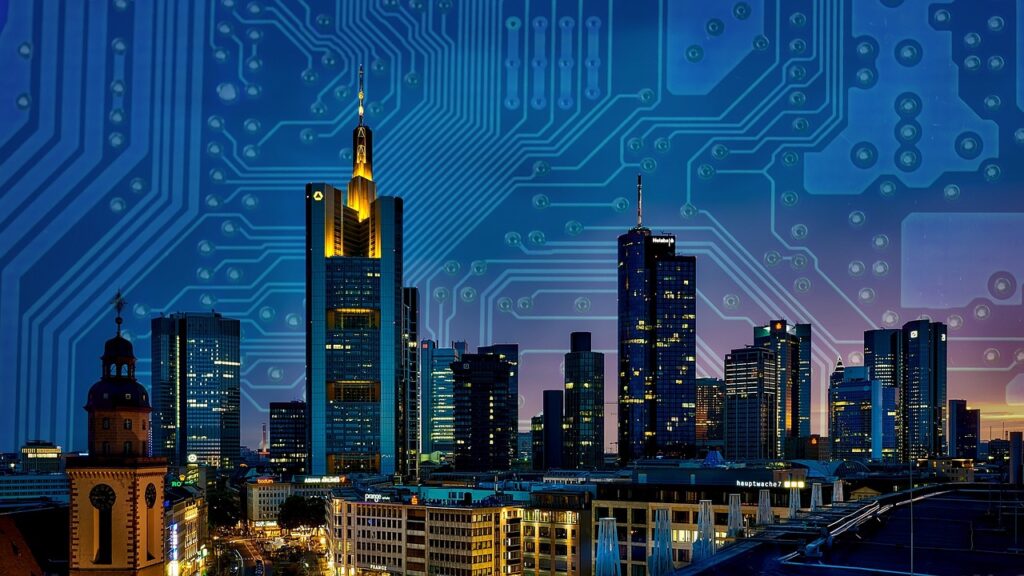Imagine a world where your morning commute is free of traffic, you don’t have to worry about crime, and the air you breathe is as clear as the countryside. Think of highly efficient waste management, a sophisticated transport system, and even real-time health monitoring; it sounds like a scene out of a minority report doesn’t it? What if I told you that this is a rapidly approaching reality, especially with the advancement in AI and data collection? According to the world bank, it is estimated that about 56% of the world’s population lives in cities, and it will only increase to more than 70% by 2050. This doesn’t come without its complications however, from overcrowding to strain on infrastructure and public services which is why smart cities are no longer a luxury but a fast becoming necessity . The concept of smart cities has existed for a while now, but is it really going to revolutionize how we work and live our day-to-day lives as some have claimed? Let’s delve into the fascinating world of smart cities and find out!

In order to transform a city into a smarter version of itself, there would have to be a strategic blend of technological innovation, collaboration between governments and private sectors, policy changes and above all a hefty amount of investment. When all these work in perfect unison, the main features of a smart city would emerge. Let’s delve into some of these critical prerequisites:
- Internet of things (IoT). This is the backbone of any smart city as it links the physical infrastructure to the digital world using sensors, cameras, mobile tracking and algorithms allowing them to work together for a perfect collection and analysis of data which in turn makes the city more efficient. This was seen when London introduced a smart parking project called smartpark which allowed drivers to easily locate free parking spaces quickly cutting down traffic significantly.

- Sustainability. Environmental consideration in regard to the increasing impact that large cities have on the ecological quality of urban areas. Another major pillar for smarter cities is to prevent further environmental degradation which is achieved through energy effective buildings, renewable energy resources, use of sustainable materials and better planning to facilitate walking and cycling further reducing the need for automobiles.
- Public safety and security. A smart city must be able to cater for a wide range of needs for its residents and security is one of the most important. Surveillance cameras, predictive policing algorithms and disaster management which relies on real-time data and effective response systems are some of the possible ways to curb crime in smart cities.
- Big Data and data analytics. In order to make sense of all the data being collected from the smart city. These in turn help city and public service planners to make informed decisions while also being able to predict possible future outcomes of different setups or scenarios.
- Smart infrastructure. Infrastructure that is able to make use of IoT and big data to optimize its performance to improve efficiency and possibly cut down on the environmental impacts. This can be transportation, energy systems or buildings that can be optimised. It should be noted that this can only be practical with the presence of high-speed internet access which will lubricate the connectivity of the systems while enabling for the residents’ participation in a digital society.
- Innovation. Innovation means that a smart city should strive for new and better technologies to further improve the quality of its core components and deliver better services while reducing its environmental impacts. Technology is, therefore, a significant aspect of a smarter city.

Conclusion
As evidenced by Amsterdam’s ambitious Smart City project, the futuristic vision of smart cities is no longer confined to theoretical concepts or tech conventions. Amsterdam’s holistic strategy has not only made it possible for residents to sell surplus energy generated by their solar panels, but it has also pioneered a circular economy ecosystem that champions regenerative resource utilization. This isn’t just an urban revolution—it’s a testament to human ingenuity and our collective drive for a sustainable future. This tangible reality is gradually reshaping our urban landscapes, revealing a brave new world of smart cities that we’re excited to see flourish.
